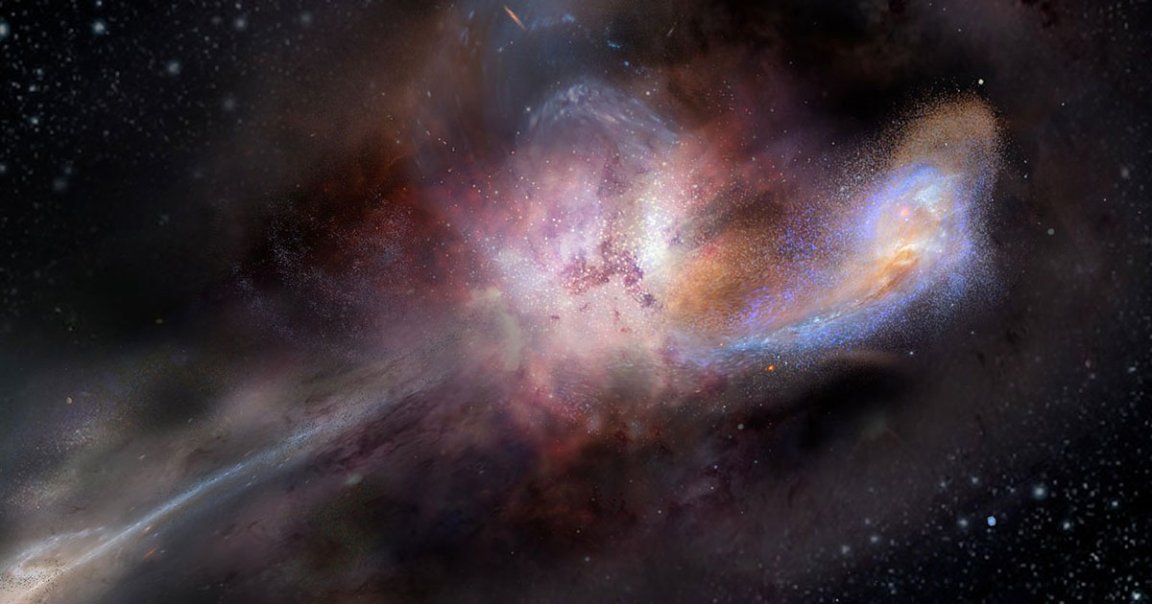
Astronomers have long suspected that the early universe was home to some massive galaxies, but mysteries lingered about these ancient cosmic giants.
For one, based on theoretical predictions, these giant old-school galaxies shouldn’t have been as big as they were given how young the universe was at the time. Then there was the fact that astronomers could never seem to spot a monster galaxy during its formation, only after it’d matured.
Now, an international team of astronomers has found evidence of one of these “missing link” galaxies — a discovery so significant that they’re comparing it to spotting a Yeti’s footprints in the wild.
A paper published Tuesday in The Astrophysical Journal details how the researchers first spotted evidence of the galaxy in data from Chile’s Atacama Large Millimeter Array (ALMA). They determined that the faint blob of light in the ALMA observations took approximately 12.5 billion years to reach Earth, meaning the observations date to the universe’s infancy.
“We figured out that the galaxy is actually a massive monster galaxy with as many stars as our Milky Way,” researcher Ivo Labbé said in a press release, “but brimming with activity, forming new stars at 100 times the rate of our own galaxy.”
That combination of being really old, really big, and really active was exactly the type of mythical galaxy astronomers had longed to find. And now that they have, they’re looking forward to using NASA’s soon-to-be-launched James Webb Space Telescope (JWST) to investigate the monster galaxy — and potentially others like it — in more detail.
“JWST will be able to look through the dust veil so we can learn how big these galaxies really are and how fast they are growing, to better understand why models fail in explaining them,” researcher Christina Williams said in the press release.
READ MORE: Cosmic Yeti from the Dawn of the Universe Found Lurking in Dust [University of Arizona]
More on galactic formation: New “Chameleon Theory” Could Explain Dark Energy, How Galaxies Formed